International Marketing Strategy Exam: Franchising & Market Entry
VerifiedAdded on 2023/06/04
|5
|840
|89
Exam
AI Summary
This document presents a solution to an international marketing strategy exam. It covers key business development concepts for establishing a fast-food business, including industry analysis, market segmentation, and franchising strategies. The proposed fast-food chain, "Fresh Fields," focuses on vegan options and aims for international expansion through single-unit franchising and strategic partnerships, particularly in markets like the USA and India. The solution also addresses expanding into the South Korean market using green marketing and co-branding, suggesting partnerships with sustainable clothing brands like Danha or Ki Lee. The proposed marketing campaign emphasizes the sustainability of woollen clothing using organic and recycled fabrics, employing green design and positioning strategies to promote environmentally friendly products.
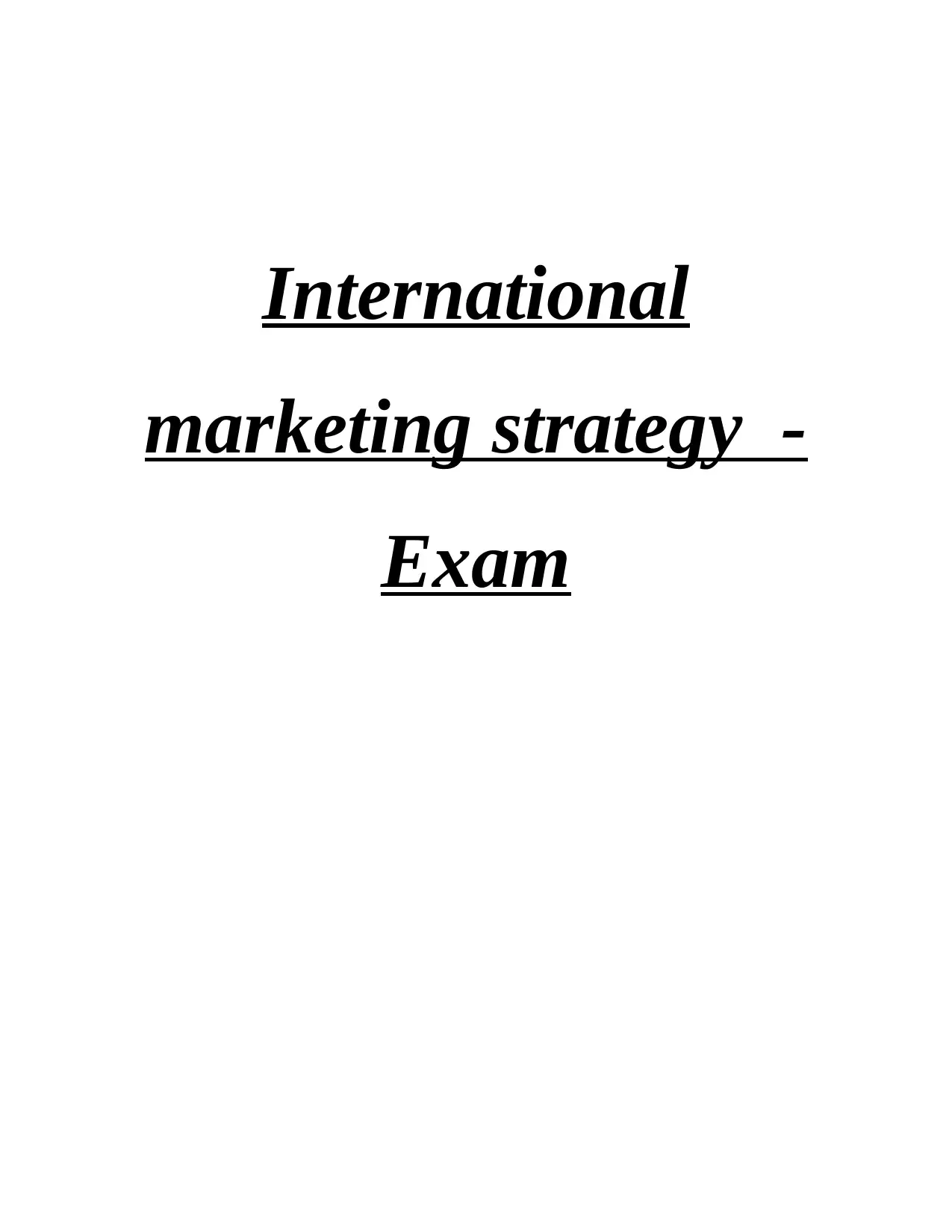
International
marketing strategy -
Exam
marketing strategy -
Exam
Paraphrase This Document
Need a fresh take? Get an instant paraphrase of this document with our AI Paraphraser
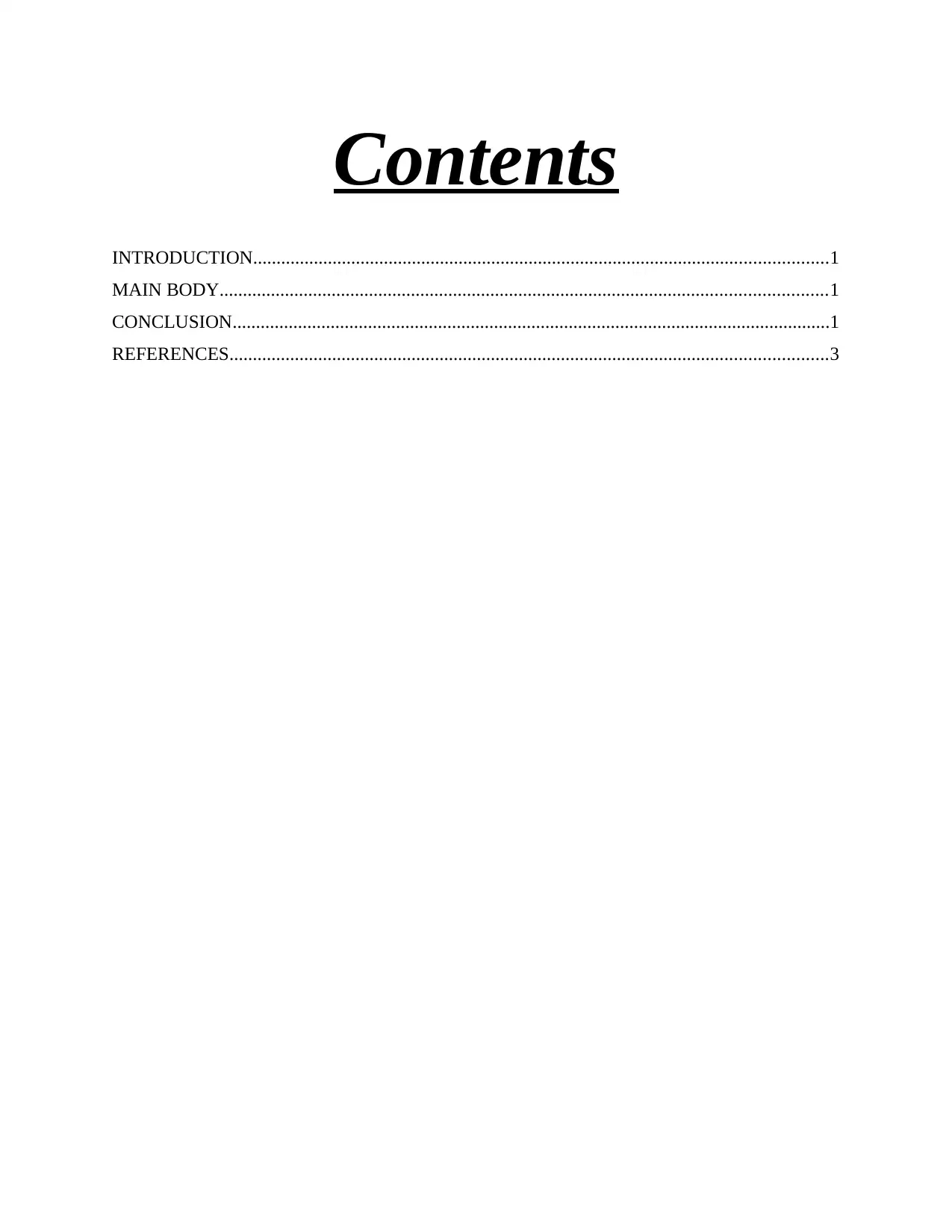
Contents
INTRODUCTION...........................................................................................................................1
MAIN BODY..................................................................................................................................1
CONCLUSION................................................................................................................................1
REFERENCES................................................................................................................................3
INTRODUCTION...........................................................................................................................1
MAIN BODY..................................................................................................................................1
CONCLUSION................................................................................................................................1
REFERENCES................................................................................................................................3
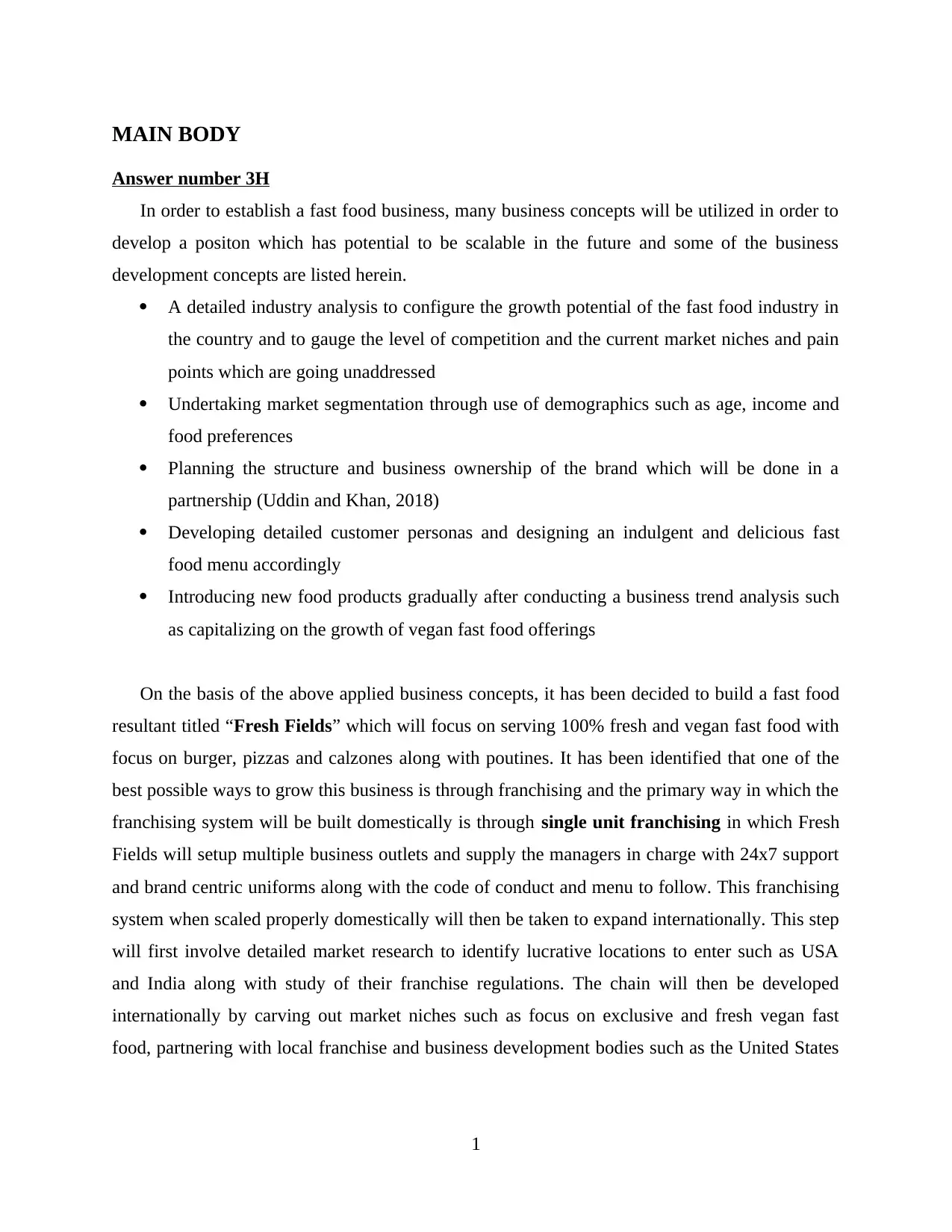
MAIN BODY
Answer number 3H
In order to establish a fast food business, many business concepts will be utilized in order to
develop a positon which has potential to be scalable in the future and some of the business
development concepts are listed herein.
A detailed industry analysis to configure the growth potential of the fast food industry in
the country and to gauge the level of competition and the current market niches and pain
points which are going unaddressed
Undertaking market segmentation through use of demographics such as age, income and
food preferences
Planning the structure and business ownership of the brand which will be done in a
partnership (Uddin and Khan, 2018)
Developing detailed customer personas and designing an indulgent and delicious fast
food menu accordingly
Introducing new food products gradually after conducting a business trend analysis such
as capitalizing on the growth of vegan fast food offerings
On the basis of the above applied business concepts, it has been decided to build a fast food
resultant titled “Fresh Fields” which will focus on serving 100% fresh and vegan fast food with
focus on burger, pizzas and calzones along with poutines. It has been identified that one of the
best possible ways to grow this business is through franchising and the primary way in which the
franchising system will be built domestically is through single unit franchising in which Fresh
Fields will setup multiple business outlets and supply the managers in charge with 24x7 support
and brand centric uniforms along with the code of conduct and menu to follow. This franchising
system when scaled properly domestically will then be taken to expand internationally. This step
will first involve detailed market research to identify lucrative locations to enter such as USA
and India along with study of their franchise regulations. The chain will then be developed
internationally by carving out market niches such as focus on exclusive and fresh vegan fast
food, partnering with local franchise and business development bodies such as the United States
1
Answer number 3H
In order to establish a fast food business, many business concepts will be utilized in order to
develop a positon which has potential to be scalable in the future and some of the business
development concepts are listed herein.
A detailed industry analysis to configure the growth potential of the fast food industry in
the country and to gauge the level of competition and the current market niches and pain
points which are going unaddressed
Undertaking market segmentation through use of demographics such as age, income and
food preferences
Planning the structure and business ownership of the brand which will be done in a
partnership (Uddin and Khan, 2018)
Developing detailed customer personas and designing an indulgent and delicious fast
food menu accordingly
Introducing new food products gradually after conducting a business trend analysis such
as capitalizing on the growth of vegan fast food offerings
On the basis of the above applied business concepts, it has been decided to build a fast food
resultant titled “Fresh Fields” which will focus on serving 100% fresh and vegan fast food with
focus on burger, pizzas and calzones along with poutines. It has been identified that one of the
best possible ways to grow this business is through franchising and the primary way in which the
franchising system will be built domestically is through single unit franchising in which Fresh
Fields will setup multiple business outlets and supply the managers in charge with 24x7 support
and brand centric uniforms along with the code of conduct and menu to follow. This franchising
system when scaled properly domestically will then be taken to expand internationally. This step
will first involve detailed market research to identify lucrative locations to enter such as USA
and India along with study of their franchise regulations. The chain will then be developed
internationally by carving out market niches such as focus on exclusive and fresh vegan fast
food, partnering with local franchise and business development bodies such as the United States
1
⊘ This is a preview!⊘
Do you want full access?
Subscribe today to unlock all pages.

Trusted by 1+ million students worldwide
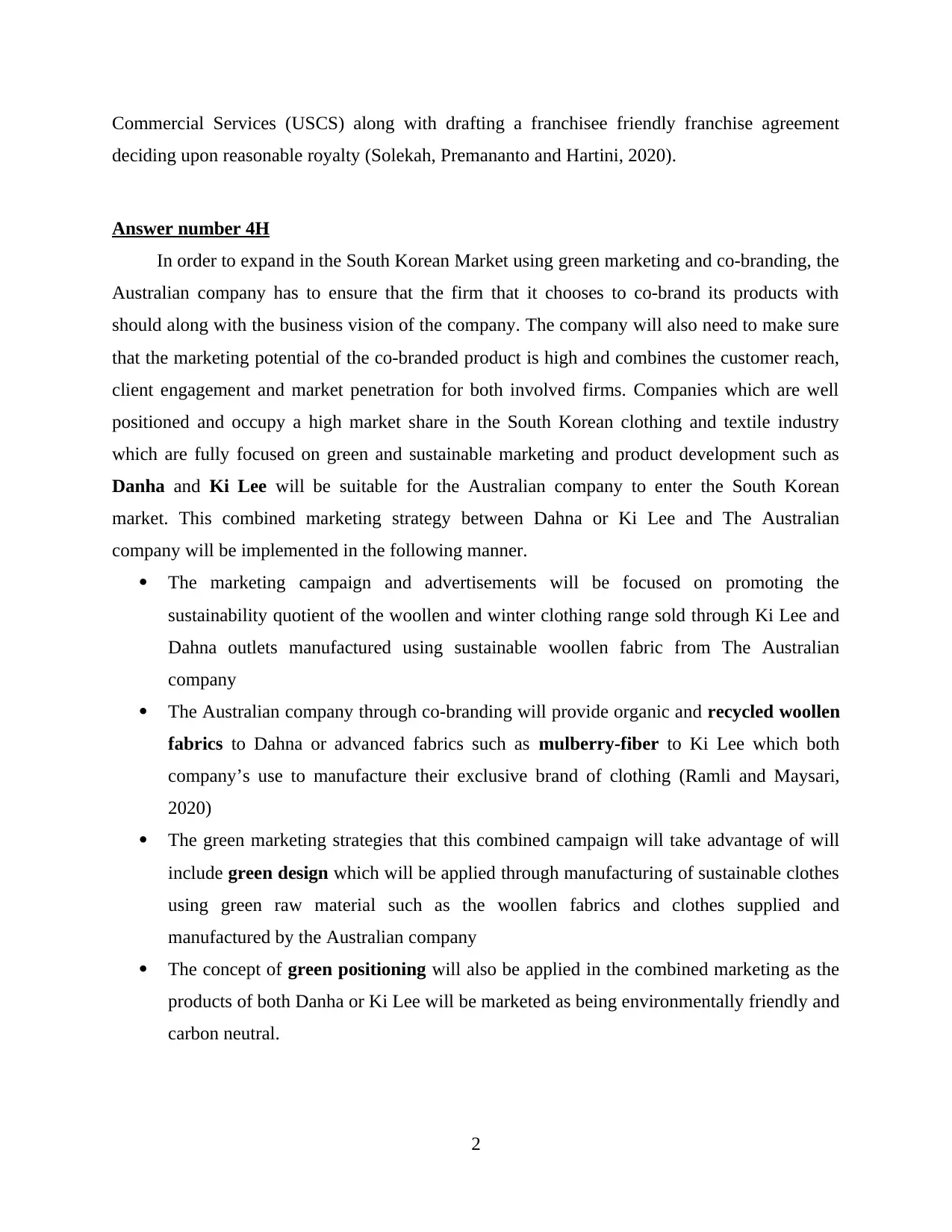
Commercial Services (USCS) along with drafting a franchisee friendly franchise agreement
deciding upon reasonable royalty (Solekah, Premananto and Hartini, 2020).
Answer number 4H
In order to expand in the South Korean Market using green marketing and co-branding, the
Australian company has to ensure that the firm that it chooses to co-brand its products with
should along with the business vision of the company. The company will also need to make sure
that the marketing potential of the co-branded product is high and combines the customer reach,
client engagement and market penetration for both involved firms. Companies which are well
positioned and occupy a high market share in the South Korean clothing and textile industry
which are fully focused on green and sustainable marketing and product development such as
Danha and Ki Lee will be suitable for the Australian company to enter the South Korean
market. This combined marketing strategy between Dahna or Ki Lee and The Australian
company will be implemented in the following manner.
The marketing campaign and advertisements will be focused on promoting the
sustainability quotient of the woollen and winter clothing range sold through Ki Lee and
Dahna outlets manufactured using sustainable woollen fabric from The Australian
company
The Australian company through co-branding will provide organic and recycled woollen
fabrics to Dahna or advanced fabrics such as mulberry-fiber to Ki Lee which both
company’s use to manufacture their exclusive brand of clothing (Ramli and Maysari,
2020)
The green marketing strategies that this combined campaign will take advantage of will
include green design which will be applied through manufacturing of sustainable clothes
using green raw material such as the woollen fabrics and clothes supplied and
manufactured by the Australian company
The concept of green positioning will also be applied in the combined marketing as the
products of both Danha or Ki Lee will be marketed as being environmentally friendly and
carbon neutral.
2
deciding upon reasonable royalty (Solekah, Premananto and Hartini, 2020).
Answer number 4H
In order to expand in the South Korean Market using green marketing and co-branding, the
Australian company has to ensure that the firm that it chooses to co-brand its products with
should along with the business vision of the company. The company will also need to make sure
that the marketing potential of the co-branded product is high and combines the customer reach,
client engagement and market penetration for both involved firms. Companies which are well
positioned and occupy a high market share in the South Korean clothing and textile industry
which are fully focused on green and sustainable marketing and product development such as
Danha and Ki Lee will be suitable for the Australian company to enter the South Korean
market. This combined marketing strategy between Dahna or Ki Lee and The Australian
company will be implemented in the following manner.
The marketing campaign and advertisements will be focused on promoting the
sustainability quotient of the woollen and winter clothing range sold through Ki Lee and
Dahna outlets manufactured using sustainable woollen fabric from The Australian
company
The Australian company through co-branding will provide organic and recycled woollen
fabrics to Dahna or advanced fabrics such as mulberry-fiber to Ki Lee which both
company’s use to manufacture their exclusive brand of clothing (Ramli and Maysari,
2020)
The green marketing strategies that this combined campaign will take advantage of will
include green design which will be applied through manufacturing of sustainable clothes
using green raw material such as the woollen fabrics and clothes supplied and
manufactured by the Australian company
The concept of green positioning will also be applied in the combined marketing as the
products of both Danha or Ki Lee will be marketed as being environmentally friendly and
carbon neutral.
2
Paraphrase This Document
Need a fresh take? Get an instant paraphrase of this document with our AI Paraphraser
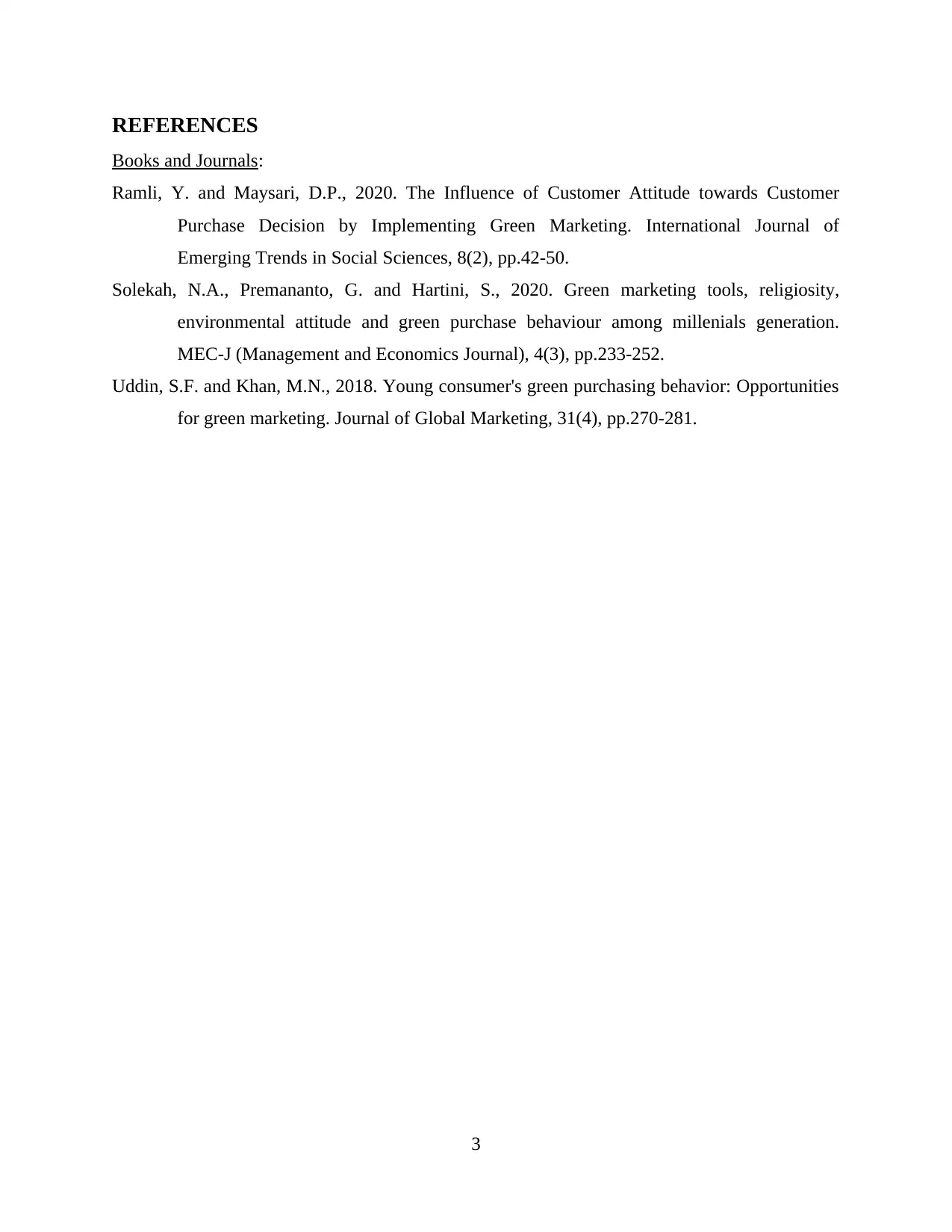
REFERENCES
Books and Journals:
Ramli, Y. and Maysari, D.P., 2020. The Influence of Customer Attitude towards Customer
Purchase Decision by Implementing Green Marketing. International Journal of
Emerging Trends in Social Sciences, 8(2), pp.42-50.
Solekah, N.A., Premananto, G. and Hartini, S., 2020. Green marketing tools, religiosity,
environmental attitude and green purchase behaviour among millenials generation.
MEC-J (Management and Economics Journal), 4(3), pp.233-252.
Uddin, S.F. and Khan, M.N., 2018. Young consumer's green purchasing behavior: Opportunities
for green marketing. Journal of Global Marketing, 31(4), pp.270-281.
3
Books and Journals:
Ramli, Y. and Maysari, D.P., 2020. The Influence of Customer Attitude towards Customer
Purchase Decision by Implementing Green Marketing. International Journal of
Emerging Trends in Social Sciences, 8(2), pp.42-50.
Solekah, N.A., Premananto, G. and Hartini, S., 2020. Green marketing tools, religiosity,
environmental attitude and green purchase behaviour among millenials generation.
MEC-J (Management and Economics Journal), 4(3), pp.233-252.
Uddin, S.F. and Khan, M.N., 2018. Young consumer's green purchasing behavior: Opportunities
for green marketing. Journal of Global Marketing, 31(4), pp.270-281.
3
1 out of 5
Related Documents
Your All-in-One AI-Powered Toolkit for Academic Success.
+13062052269
info@desklib.com
Available 24*7 on WhatsApp / Email
![[object Object]](/_next/static/media/star-bottom.7253800d.svg)
Unlock your academic potential
Copyright © 2020–2025 A2Z Services. All Rights Reserved. Developed and managed by ZUCOL.





